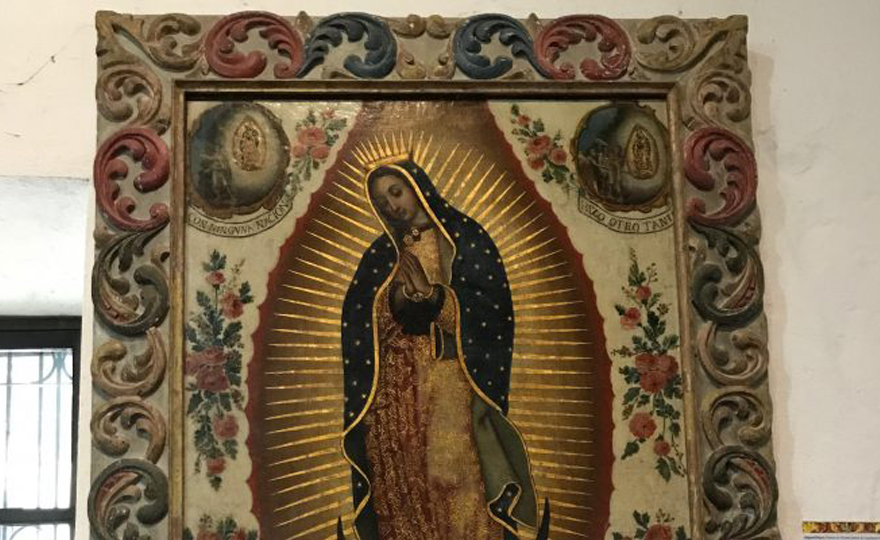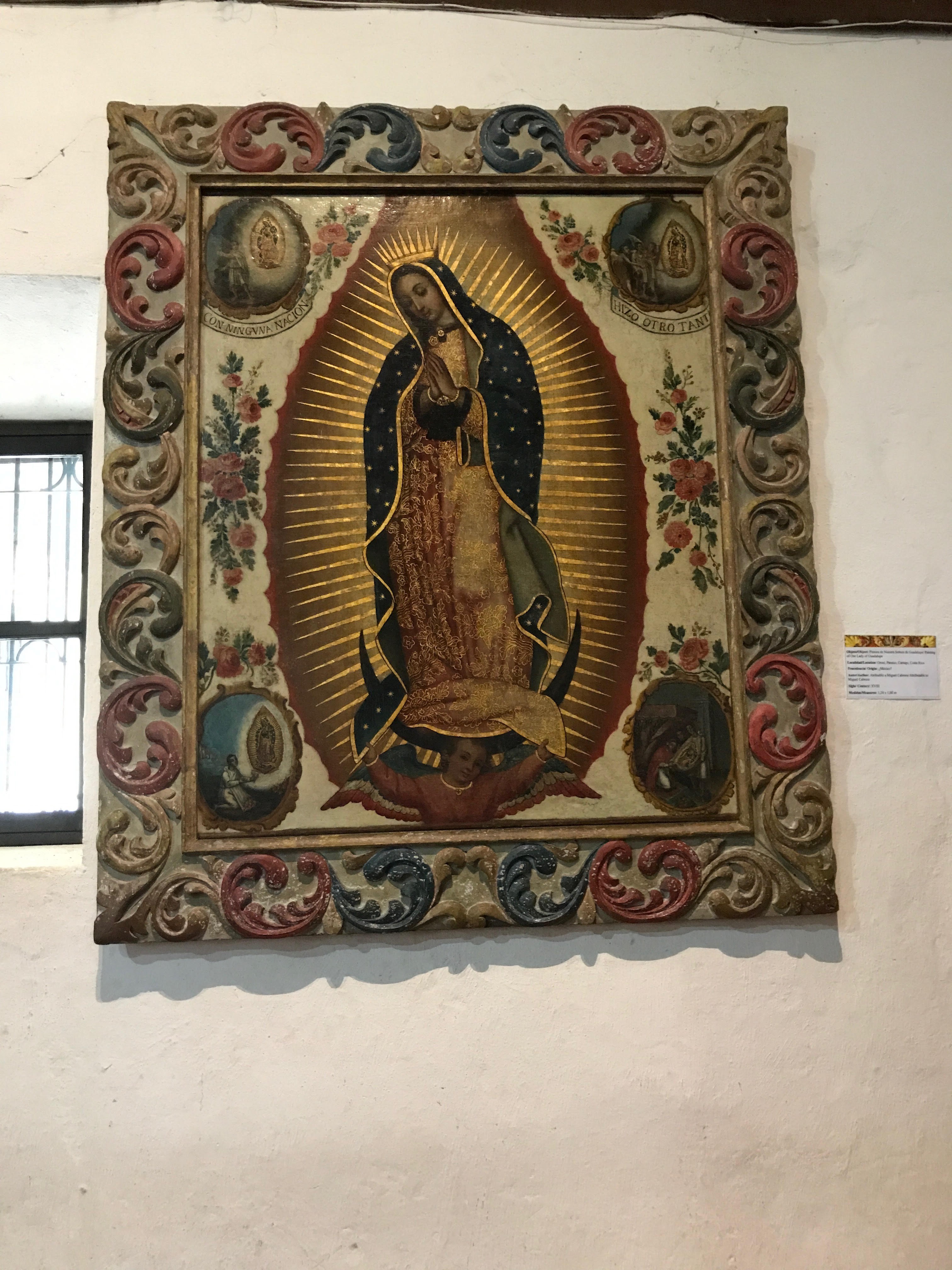


Religion is a part of Costa Rican culture. Although there are many Costa Rican people who are not very religious, many people are religious. I found that most people that I have interacted with in Costa Rica identify as Catholic or Evangelical Christian. The Catholic tradition in Costa Rica is prevalent and rich, which is not surprising because that is the official religion of the country. My host parents are also Catholic. Thus I had the opportunity to see much more of the Catholic tradition (particularly as it is in Costa Rica) than I have ever seen before. As an evangelical Christian, I brought in some of my own ideas about prayer and worship, and some of what I found in the new tradition challenged my own ideas. However, I tried to keep an open mind and understand this unfamiliar side of Christianity. In doing so, I found that, through its unique traditions, Catholic worship has a lot to offer one’s spiritual life. With the following examples, I hope to show how much I could learn from Catholicism and illustrate the importance of encountering religious traditions other than your own.

This is a traditional Catholic image of the Virgin Mary taken at the basilica.
One part of the Catholic tradition in Costa Rica are the Rezo de Niño ceremonies (prayers to the Christ Child). In Catholic homes, the nativity scenes are left out until this ceremony has passed. The host invites friends and family to attend the Rezo de Niño, and an appointed person leads the congregation in a ceremony of prayer and music. This consists of the whole Rosary and Christmas songs, usually lasting about an hour. Afterwards, the host serves food (always including lots of rice) and sometimes there is music and dancing. Through these Rezo de Niños I saw that religious customs are important not only for individuals’ spiritual lives, but they bring families and friends together in a very real way. I observed that the Catholic tradition is much more relaxed and accepting in Costa Rica than I had imagined. There were varying degrees and styles of engagement from the participants: some were very concentrated while others simply waited or watched. It was not a problem to arrive late, and one ceremony even doubled as a birthday party. I felt that the most important part of the experience were the relationships. The traditions within the catholic faith opened up opportunities to celebrate community.
Another part of the Catholic tradition, which at first made me uncomfortable, were the prayers to Mary. As an evangelical Christian, I am only accustomed to prayers that are directly to God, not to any of the Saints. I was afraid to pray to Mary because I did not want to commit the sin of idolatry, and I was not sure if praying to any being other than God would be right. However, I opened up a conversation with a religious woman about praying to Mary at one of the Rezos that I attended. I learned several things that have increased my respect for Mary and for the catholic custom of praying to Mary. First, she made it clear that Catholics do not worship Mary with the same kind of praise that is reserved for God. Rather, they love and adore her. I was made to see that prayer can mean different things for different people. It can be worship or it can simply be a form of love. Second, the Catholic woman said that they honor Mary with a reverence that comes from her being chosen by God, and because she is the Mother of God (the Christ child). The woman believed that Mary was human, but she is set apart from other humans by God, and through this she deserves our reverence. She gently challenged the lack of attention to Mary and to the Saints within the evangelical tradition. This helped me see my own tradition from a new perspective, and increased my respect for the Catholic attention to the Saints.
Another custom that I had to consider was the effectiveness of the repetition of the Rosary. In my tradition, I usually do not repeat and recite standard prayers. Rather, I think of prayer as an open and genuine communication with God. However, this form of prayer showed an aspect of meditation, which I came to respect more than before. I understand that meditating on the same phrase, over and over, can help train and center one’s attitude and build patience. Catholics show discipline in repeating the Rosary. With this being said, I was still conflicted about the effectiveness of the repeated prayers. Within the Rosary, people beg Mary to bring God’s blessing to them over 50 times. I wondered: If Mary can actually hear and respond to our requests, why bother asking her for the same thing over and over? Wouldn’t this show lack of faith in her response, or at least be annoying to her? I asked one older woman my question, and she gave me a new perspective on the prayer. She said that the phrase is repeated over and over not just to communicate with Mary, but the phrases themselves are a gift to her. The prolonged attention and the prayer itself is an offering to the woman that they honor so much. These experiences allowed me to see prayer from a new perspective, and I realized that my idea and use of prayer is not the only way that prayer can be used as a spiritual discipline.
One part of my experience of the Catholic tradition relates more specifically to my traveling opportunities. This was our class trip to the Basilica de Nuestra Señora de los Angeles. The basilica is beautiful, and it is built on the spot where the Virgin appeared in person, according to tradition. Underneath the basilica is a place where people leave offerings for the Virgin. There is also a spring where blessed water is said to come out, and there were several people collecting the water into bottles. I was impressed by this display of faith and discipline by the worshipers. However, the most impressive display of discipline were the people who walked on their knees to the high altar. Some people started at the entrance to the long Basilica, others started even farther away. Their knees must have been killing them. Some people, such as my host dad, even walk from far-away cities to make their pilgrimage to the Basilica. (My host dad walked over 50 miles for his pilgrimage.) These are impressive displays of faith and love for the Virgin and God. Although my personal faith experiences do not require grand offerings, do not promote the use of symbols and relics, and do not require pilgrimages to specific Holy Sites, I learned to really appreciate and respect these new types of worship through my travel experience.

This is a photo of me with my classmates (Hannah, Kyra, and Gabby) in front of La Basilica de Los Angeles.
If I hadn’t traveled, I would not have been pushed to experience so much of the Catholic tradition. I also experienced different forms and customs within a church closer to my own tradition by attending the church Oasis de Benedicción. I got to see perspectives from other religions, as well, through conversations with other international students at the University of Costa Rica. Traveling helped me step out of a context that was familiar to me and see spirituality and worship through a different lens. I learned to widen my own perspective on prayer, on Saints, and on religious ceremonies. This helped me gain greater appreciation for different traditions and customs. People can learn so much through travel if only they can be attentive and open to what they encounter abroad.